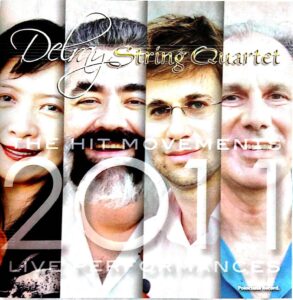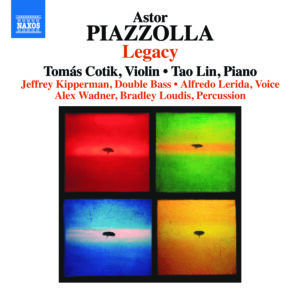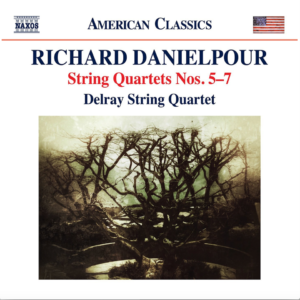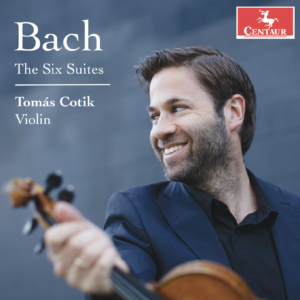Astor Piazzolla (1921–1992)
Buenos Aires
Argentine Tango
Argentine society has always been a melting pot; Argentina has historically been an open society without ghettos. The tango, which began as an informal institution and is the result of the combined influence of thousands of immigrants, especially Italians, is a great example of this. Tango research embodies the history of multiculturalism in Argentina and the recovery of social networks, symbols and values of cultural identity (national, city, district and gender identities). The tango itself is a multivocal experience, which tells the story of many different people. It is not only a vehicle but an instrument for cultural integration. It is the acceptance of diversity and the inclusion of marginality within the system.
The ever-popular tango is a complex genre involving dance, music, poetry, song, narrative, gesture and drama. It also joins together African, American and European cultural and aesthetic elements. Chronologically, the tango in Buenos Aires has been ‘tango de negros’, tango Americano or Habanera, Andalusian or Spanish tango, tango criollo, tango rioplatense and finally, tango Argentino. The history of the tango is not simply a conventional one of shifting period styles and competing national traditions, since it must accommodate countless non-aesthetic elements as well as philosophical and ethical values that help shape these styles – and that these styles sometimes shape in return.
Argentina was the second largest recipient of immigrants between 1821 and 1932, the United States of America being first, and Canada the third. Some four million immigrants – mainly Italians, Spaniards and French – had settled in Argentina by the 1920s. As of the 1850s, millions of people left Europe and settled in the Americas. For instance, between 1876 and 1976 some 26 million Italians left their country: 5.7 million went to the United States and 3 million went to Argentina. In 1869, 24 per cent of the total population of the capital city of Buenos Aires was Italian and 8 per cent was Spanish. Not only were the Italians the largest group of immigrants, but the majority of names related to the tango were Italian; the Italian and Italian-Argentine contribution to the tango has been remarkable. Italians came both from the north and the south of the Peninsula, in greater numbers from the north at the beginning, to be equalled by immigrants from the south later on. Immigrants came to Argentina from all regions of Italy. Foreign residents were resisted by criollos (Argentinians of Spanish descent), and the Italians were no exception to this rule. Moreover, porteños (inhabitants of the port city of Buenos Aires) made fun of Italians’ everyday speech.
At the start of this immigration influx, Italians married Italians and Spaniards married Spaniards. Mixed marriages occurred later on. Italian immigrants in Argentina would not speak their native language to their children and, as a result, few Argentines now are fluent in Italian. Nevertheless, immigrants would not totally forget their mother tongue and many Italian words were incorporated into everyday language. This process gave birth to the slang of Buenos Aires: el lunfardo – this term is intimately associated with the tango, which also includes terms provided by other groups of immigrants – and cocoliche, a hybrid of Spanish and Italian, which is no longer in use.
Many immigrants lived in the crowded conventillos (‘tenements’); Spaniards, Italians, Poles would share patios and bathrooms. The patios served several functions, including – among many others – it being a place to play music on the guitar, the accordion or concertina, the mandolin, the violin and the bandoneon, which is the quintessential instrument of the tango. Creoles and foreigners would informally exchange musical skills and blend musical and dancing traditions. In various ways, these groups were facing life together and shaping a mutual worldview. Thus, a repertoire of shared emotions was imprinted on the tango.
Piazzolla’s Music of Buenos Aires
Astor Piazzolla is both the product of a tradition and of the rupturing of that tradition. Piazzolla broke the musical paradigm of tango and, for so doing, he was never forgiven by the traditionalists. Astor Piazzolla had no political banner or affiliations; he spoke to the audiences in a new language. He never compromised his standards to cater to commercial interests. ‘My dream,’ Piazzolla once said, ‘is to impose my music, my country’s music, all over the world.’
Piazzolla was indeed a citizen of the world. When he died in 1992, he had lived in several major cities in Europe and the Americas, and he and his music were renowned around the globe. In the 21st century, Piazzolla’s Nuevo tango has finally gained acceptance in his home country of Argentina (where, during his lifetime, it had encountered significant resistance), and his music has influenced a new generation of tango composers. Nowadays, Piazzolla is a universal musician, well known everywhere, from the local scene to the global stage and back again. During most of his life, his music was not considered tango; today the tango genre would not be complete without Piazzolla’s music.
In a journey that began with his birth in 1921 in Mar del Plata, south of Buenos Aires, and ultimately traversed the planet, he spread and expanded his musical vision of the tango – a mixture of jazz, Klezmer and contemporary classical music. The rhythmic arrangement of much of Piazzolla’s music has often been commented on. Its characteristic accents of 3–3–2 (his emphasis on the first, fourth and seventh note of an eight-note group in a 4/4 bar) derive ultimately from the milonga and its predecessor, the Cuban habanera. It was easy enough for the milonga rhythm to mutate into a 3–3–2 arrangement: the particular ligature that pushed it in that direction was typical of the guitar playing that accompanied milongas. The rhythm itself was certainly to be heard in tango orchestras by the 1930s and 1940s. It also appears in the Klezmer music Piazzolla heard at Jewish weddings as a boy in Manhattan, something that registered with him – or so he said more than once. The same rhythm, from Central and Eastern Europe (not least Bulgaria), from where the Klezmer tradition came, was incorporated into the music of Piazzolla’s great idol, Béla Bartók. Bartók had systematically explored the Hungarian peasant traditions, and created a universal music that also reflected the influences of Liszt, Strauss, Debussy and Stravinsky. Piazzolla was shown many Bartók scores during his years with Alberto Ginastera. Bartók’s influence on Ginastera left a permanent trace on Piazzolla. But wherever Piazzolla got the 3–3–2 rhythm, he made it peculiarly his own. His sensitivity to rhythm was extraordinary. The great artist Egle Martin remembers him as a walking encyclopaedia of rhythms, with an especially good ear for the African roots of such River Plate dance forms as the candombe, the (imported) habanera and the milonga – all of which, historically, flowed into the tango itself. And we must never forget that whatever techniques and influences Piazzolla assimilated from classical music and jazz, they were all placed firmly within the framework of the tango, the music of Buenos Aires – his music.
As composer, arranger, bandleader and performer, Piazzolla’s specialty was the music of Buenos Aires. He sometimes said that he had three great music teachers: Alberto Ginastera, Nadia Boulanger and Buenos Aires. A fourth influence could be added – his father Vicente ‘Nonino’ Piazzolla. It was his father who gave him his first bandoneon – a cultural message as well as a musical instrument. Nonino, a first-generation Argentine but still highly Italian, told his son: ‘You must be Argentine.’ It is as if Astor received a strong paternal mandate that he could never really escape. As an adolescent, he resisted the tango, and perhaps resisted being Argentine. All his life, in fact, he was something of a rootless migrant. Deep down, however, he became thoroughly tanguero, that is to say thoroughly imbued with the tango culture. In December 1939, he joined Aníbal ‘Pichuco’ Troilo’s band. Troilo himself conceived a strong affection for Piazzolla, and Troilo’s wife, Zita, liked him too. When unable to play, he sometimes asked Piazzolla to take the role of lead bandoneon, something resented by the other bandoneonists. Piazzolla also occasionally acted as a pianist when Orlando Goñi was too drunk to appear. Yet Troilo, despite his growing confidence in Astor, was never really reconciled to Piazzolla’s adventurousness. His own much-reiterated preference was for ‘danceable’ music. Piazzolla wanted to create music that appealed to the ear rather than the feet.
It was in 1955 that Piazzolla, after studying with Nadia Boulanger, in defiance of all convention, adopted the habit of playing his bandoneon standing up, with a leg resting on a chair. ‘I didn’t want to see the other musicians on the same level as me,’ he said later. ‘I had to feel I was above them.’ Standing up, he could observe and command the whole orchestra. Piazzolla had never liked the traditional practice of sitting down while playing his instrument. It reminded him too much, he said, of an old woman doing her knitting. ‘I even believe that we dance together, the bandoneon and myself,’ Astor would say years later. It symbolised the world he was trying to reject, or at least renew. Standing up was his declaration of independence. He was ready to create different groups: octets, nonets, quintets, sextets, string ensembles, and to write for chamber and symphonic orchestras.
Much of Piazzolla’s efforts in the first half of the 1960s went into pieces conceived or adapted for the Quinteto Nuevo Tango. Among the most notable, perhaps, are his ‘Ángel’ and ‘Diablo’ sequences. The ‘Ángel’ sequence to which Resurrección del Ángel 2 belongs, has a particularly inspired melodic vein. On 19 May 1970, Piazzolla celebrated the tenth anniversary of the quintet in his opening remarks to a show that was to become the first live recording of a tango recital for issue as a long-playing record. An absolute highlight of that night’s show and of the album was his now completed suite Las cuatro estaciones porteñas (‘The Four Seasons of Buenos Aires’ or ‘Four Porteño Seasons’) 6 – 9 . Piazzolla had been able to buy a piano with a loan from the Fondo Nacional de las Artes. The first composition he wrote on this piano was Verano Porteño (1965); the rest of the ‘Porteño Seasons’ came later. One of his best-known works, the Estaciones are a respectful nod to Vivaldi. Vivaldian traces can be heard in the music, most obviously in the closing bars of Invierno Porteño.
Other music composed for quintet included Fugata ! in 1969, which Piazolla wrote for his first quintet. Fugata is the first movement of three of Tangata (‘Sylphe and Ondine’), dedicated to the choreographer Oscar Araiz who had used his music in a recent Ana Itelman ballet in Buenos Aires for a never-released documentary on the tango. Sylphe is the spirit of the air, Ondine, the spirit of water; the two protectors in his life. The three movements are: Fugata, Soledad 4 and Final. Piazzolla recorded Fugata with his first quintet (1969) and his second quintet (1989).
Piazzolla was in Rome when, on Sunday 18 May 1975 in Buenos Aires, Aníbal Troilo was fatally stricken with a cerebral haemorrhage. Aldo Pagani phoned Piazzolla, suggesting a suitable musical tribute. The resulting Suite Troileana condensed his feeling for Pichuco into some of the best of his music in the 1970s. Its movements – Bandoneón, Zita 5 , Whiskey and Escolaso (‘Gambling’) – evoke the key loves of Pichuco’s bohemian life. The music is for the most part fast moving, jaunty, and celebratory, though with some superbly elegiac moments. From 1978–79 came Chin Chin 1 , often in the quintet’s repertory thereafter.
Piazzolla also composed dozens of movie soundtracks. Among those is Celos 10 which was part of the film score for La intrusa in 1982.
‘Mumuki’ was an affectionate nickname Piazzolla gave to two important females in his life, Flora, one of his Yorkshire Terriers and his second wife, Laura Escalada. He composed Mumuki 3 in 1984 and would go on to perform it often and record it seven times.
María Susana Azzi
About the arrangements
All of the selections on this album are arrangements of instrumental works that Astor Piazzolla composed for his own tango ensemble, the Quinteto Nuevo Tango, which featured bandoneon, violin, bass, guitar and piano. Members of the group were all accomplished improvisers, steeped in the tango tradition, and therefore the printed scores often contain just the harmonic, melodic and rhythmic outlines, which were used as a point of departure for the players during the course of rehearsals and performances. The improvisations of solo passages were often wildly creative and virtuosic, varying greatly from performance to performance.
In his masterful arrangement of Piazzolla’s Las cuatro estaciones porteñas, the Russian composer Leonid Desyatnikov reimagines Piazzolla’s music in a concerto style for solo violin and string orchestra, in combination with elements inspired by Vivaldi’s Four Seasons.
As companion pieces for the Piazzolla/Desyatnikov Estaciones porteñas, the seven works that I arranged for this album are also orchestrated for solo violin and string orchestra. I used the published scores as a resource for the basic structure, and also transcribed and adapted the improvisations from multiple recordings and performances of the composer leading his Quinteto Nuevo Tango.
Ken Selden
Piazzolla’s Nuevo tango and his immigrant story
Piazzolla’s immigrant journey fascinates me, and while completely different, resonates with my own. I was born and grew up in Buenos Aires (not surprisingly from European ancestry) and emigrated as a late teenager to pursue my musical career. Paradoxically, I started appreciating the music of my home country more when I was living abroad. I wrote a thesis about Piazzolla’s music at the Freiburg University of Music in Germany, and later, I unsuccessfully tried to learn how to dance the tango from a Pakistani teacher in Toronto. Fast forward many years, having lived in Florida, Texas and living currently in Portland, Oregon, this music continues to feel very close to me. I am delighted to record my third album with new arrangements of music by Astor Piazzolla for Naxos, a homage to this music and to one of my cities, Buenos Aires.
I find Piazzolla’s amalgam of styles and creativity inspiring. As a performing artist, Piazzolla worked in his ensembles with top musicians from different kinds of music and was influenced by so-called popular as well as serious music. His music, the Nuevo tango, transcends categories. His compositions were precisely written down, but with room for interpretation. In Ellingtonian fashion, he wrote with specific players and ensembles in mind, rearranging his pieces several times as needed for different ensembles. The violin seems an ideal match for his music. It was one of the original instruments in tango, present in the groups playing in bordellos around the 1900s and, later, in the Orquestas típicas. In his works, Piazzolla includes and expands the effects from the violinists of the Orquestas típicas such as chicharra/lija (sandpaper), tambor, glissandi, and other yeites (‘tricks’).
I enjoy the multiple layers of Piazzolla’s Nuevo tango style. It contains some of the canyengue character of the traditional tango, a playful, charismatic, and provocative way of walking and dancing associated with the compadritos. The compadritos were men who resided in the arrabales, the rough outskirts of Buenos Aires. Reputed to be macho but likable scoundrels, they hung out on the street of Buenos Aires, often carrying knives, avoiding work, and living for women and tango. Piazzolla’s music retains other defining qualities such as mugre (‘filth’) and camorra (‘fight/trouble’), characteristic elements of tango. His compositions are often very rhythmic, full of accents, with emphasis on each note, and feature a distinctive 3+3+2 rhythm. They also have a sense of swing. The melodies can be fragmentary and disjunctive, producing at times aggressive, provocative and powerful characters. At other moments, Piazzolla’s lyrical melodies evoke Italian opera – meditative, elegiac, romantic, sensual, passionate, and at times, melancholic with a rather free approach to tempo.
Harmonically, Piazzolla often adds sevenths, ninths, and elevenths to traditional chords and occasionally uses extreme dissonances, polytonality, atonal effects, jazz cadences, and ‘colour notes’ added to the chords that give an unstable character or impressionistic atmosphere. Piazzolla revolutionised the genre with his Nuevo tango style, and as a result, incited stern opposition from the musicians of the old traditional tango for years to come. Fast forward over 100 years after his birth and 30 years after his passing, Piazzolla’s compositions are very well known and played worldwide in different settings by musicians from all possible musical and cultural backgrounds. His music still sounds fresh while becoming classic. Both the traditional tango and the Nuevo tango are examples of the enriching process of immigration and diverse cultural inclusion that contribute to the formation of unique cultural fabrics. The results are shifting, transforming, and emerging cultural territories. I hope that an appreciation of such a process may inspire an enriched and more inclusive understanding of some of today’s burning issues of immigration, diversity, integration and collaboration in the community.
Tomás Cotik



